| Finn Odum |
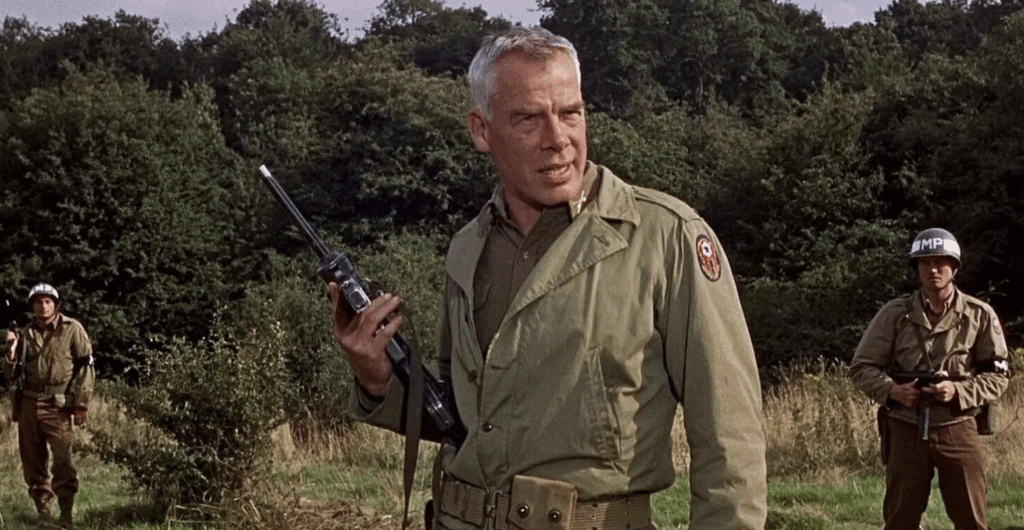
The Dirty Dozen plays at the Trylon Cinema from Sunday, September 14th, through Tuesday, September 16th. For tickets, showtimes, and other series information, visit trylon.org.
Sometime Before 1944:
The US military established a covert demolition squad that later took on the moniker “The Filthy Thirteen,” after they decided to save their bathing water for cooking.
Normandy, France, 1944:
The Filthy Thirteen were airdropped over the Douve River, where half of them died in an attempt to destroy and sabotage German forces. The remaining members, led by Sergeant Jake McNiece, engage in several demolition missions throughout the remainder of WWII. Throughout his tenure, Sergeant McNiece established himself as a cutthroat but inspirational leader.
Much to his detriment, McNiece found himself frequently challenging his superiors in defense of his team.
The Brave and The Bold #25, Published August 26th, 1959
Creative team Robert Kanigher and Ross Andru introduced a brand-new team to the DC Universe during their run of The Brave and the Bold, a “team-up” style anthology series. Issue #25 followed Colonel Rick Flag as he led a ragtag squadron of scientists (officially known as Task Force X) to defeat a heat-producing wave before it could destroy a small island. Flag and his teammates risked their lives to defeat the creature, earning themselves the moniker “Suicide Squad” by the end of the story. Outside of a short run of appearances through 1966, this version of Task Force X did not survive very long.
The Secret Invasion, 1964:
Horror icon Roger Corman directed The Secret Invasion,1 a film following a squadron of criminals as they embark on a dangerous mission courtesy of British special services.
The Dirty Dozen, published sometime in 1965:
Pulp fiction editor Erwin Nathanson secured a publishing contract for his novel The Dirty Dozen. Taking inspiration from the real-life Filthy Thirteen’s explosive exploits, Nathanson dreamt up a similar story to the tune of Corman’s Secret Invasion (which he had watched the year prior). His version of the Filthy Thirteen is a squadron of recently released criminals who embark on a dangerous mission to fight Nazis. Their nickname was derived from a punishment they received for one individual’s actions, leading them to lose bathing privileges.
Since publication, The Dirty Dozen has sold over two million copies in ten languages, inspiring one movie and three direct-to-TV sequels.
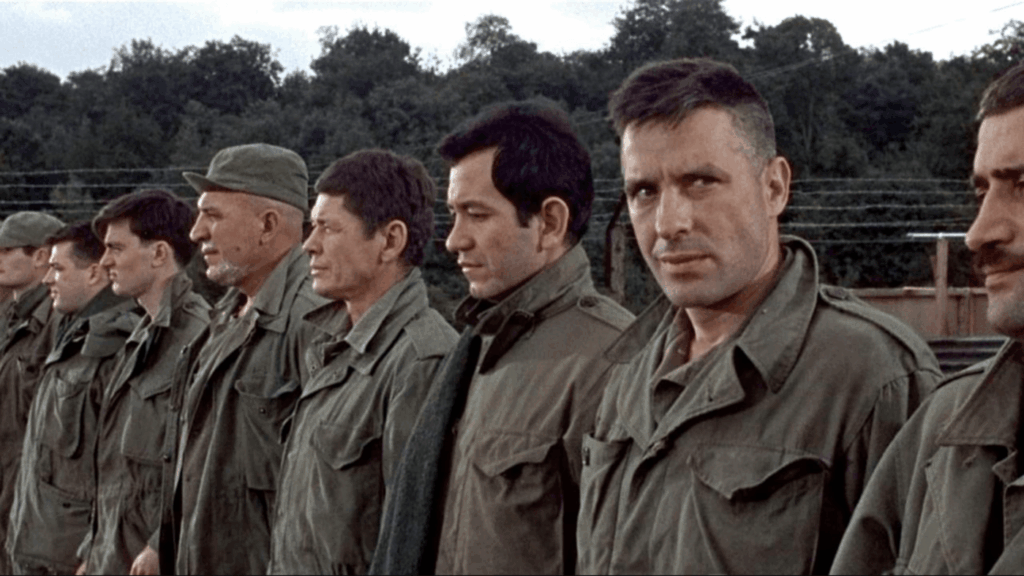
The Dirty Dozen, released June 15th, 1967:
That “one movie” was Robert Aldrich’s The Dirty Dozen, distributed by MGM.2 Its cast consisted of several real-life World War II veterans; Lee Marvin, who played squadron leader John Reisman, was a highly decorated member of the US Marine Corps. He’s a commanding presence as Reisman, a cutthroat but inspiring leader who frequently butts heads with authorities (one of whom is played by Ernest Borgnine). The Dozen was a mix of Hollywood heavyweights (like John Cassavetes and Charles Bronson) and lesser-known performers (like Donald Sutherland, who could later credit The Dirty Dozen as one of his breakout features).
What separated The Dirty Dozen from similar films—see 1963’s The Great Escape or Costa-Gavras’s Un Homme de Trop—was how it asked the audience to reckon with redemption. The Dozen varied in offenses from vaguely vile to downright disgusting. Some of them are even given a more empathetic character arc; Bronson’s stoic Wladislaw and Cassavetes’ roguish Franko both come to mind. Their evolution throughout the film challenges Reisman (and the audience) to evaluate his understanding of “good” and “evil”. They risk their lives to stop a force more evil than all (or most) of them. The audience cheers as they, the hardened criminals sentenced to death, blow up the Nazis.
Legends #3 and Suicide Squad #1, Published 1987:
In a limited run crossover following a conflict between Darkseid and the Justice League, series creator John Ostrander revived the Suicide Squad (which is still, functionally, Task Force X). This new iteration was very different from the original, following a squadron of criminals as they embarked on a dangerous mission to defeat Ronald Reagan,3 as well as the nuclear supervillain Brimstone. This iteration is led once again by Rick Flag and features a cast of C-list villains.
Months later, Task Force X reappears in Suicide Squad #. Unlike the Brave and the Bold cast, the “Suicide Squad” nickname came from the bombs implanted in the villains’ necks; if they disobey orders, they’re killed by Amanda Waller (or whoever is in charge of Belle Reve at that moment).
While many characters appeared throughout the next seven volumes (published between 1987 and 2022), Rick Flag (junior, senior, and otherwise) was a mainstay. He’s a cutthroat but inspirational leader…who was constantly fighting his superiors, the US government, and Amanda Waller…hmm.
Suicide Squad, 2016:
The much-anticipated Suicide Squad movie was released to terrible reviews, most citing its music video-esque editing and Jared Leto. The positives lie in the performances; Viola Davis’s Amanda Waller, Margot Robbie’s Harley Quinn, and Joel Kinnaman’s Rick Flag Jr. are the standouts, bringing life to some of the series’ most iconic characters.
Something about the garbage experiment in art was familiar to more astute filmgoers. First, the audience gets to know Task Force X as Colonel Flag speaks to them one by one, cell by cell. It’s a stylistic choice from Ayer that directly rips off The Dirty Dozen. Probably too many of the characters are given sympathetic backgrounds (Deadshot is motivated by his daughter, El Diablo killed his wife, and a grossly miscast Cara Delevingne is dying). It’s too much, too many people we need to care about (or not), too much time watching them train. Not to mention Rick Flag having Reisman’s slicked-back hairstyle at the start!
The worst offense, one would argue, is the dialogue. For example, instead of a character-building moment that earns the team their nickname, we get Will Smith’s best attempt at this:
The Suicide Squad, 2021:
James Gunn went on some kind of bender to redeem the DCEU when The Suicide Squad hit theaters to rave reviews. It’s a heartfelt, funny, and monstrously violent adventure. Within the first fifteen minutes, we’re introduced to a lineup of true-to-form DC C-listers, some of whom had tenure with Task Force X in the comics.
Almost all of them immediately die, save for (surprise!) Joel Kinnaman as Rick Flag.4 This depiction of Flag is exhausted; he’s already been strung out by Amanda Waller on several occasions and is now asked to cover up her mistakes (or risk the wrath of DC icon—and very appropriate given the early Suicide Squad adventure—Starro, a giant starfish from space). He also gets a fun little hat and a less Lee Marvin-esque haircut.
Gunn has also noted The Dirty Dozen as an inspiration. His B-team (not the ones killed in the beginning) is introduced to their team leader when they’re in their cells. Some of his characters are sympathetic (Flag, Idris Elba’s fantastic turn at Bloodsport, Ratcatcher II). Then, some of them are Peacemaker, who frequently volunteers that he’ll kill children if it means protecting “liberty” …whatever that means. There’s an established balance; some of these bad people are capable of good, and some are just plain awful.
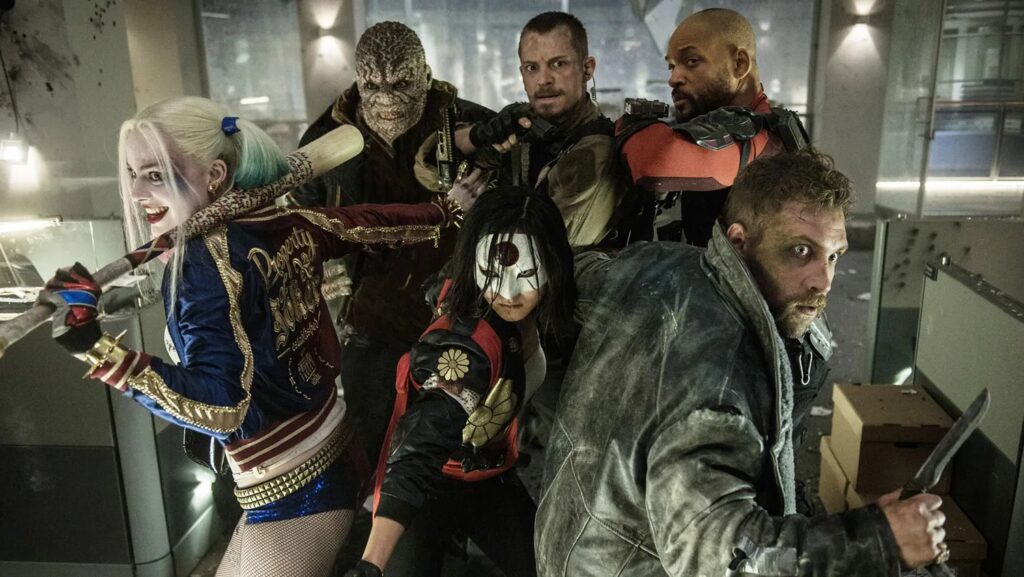
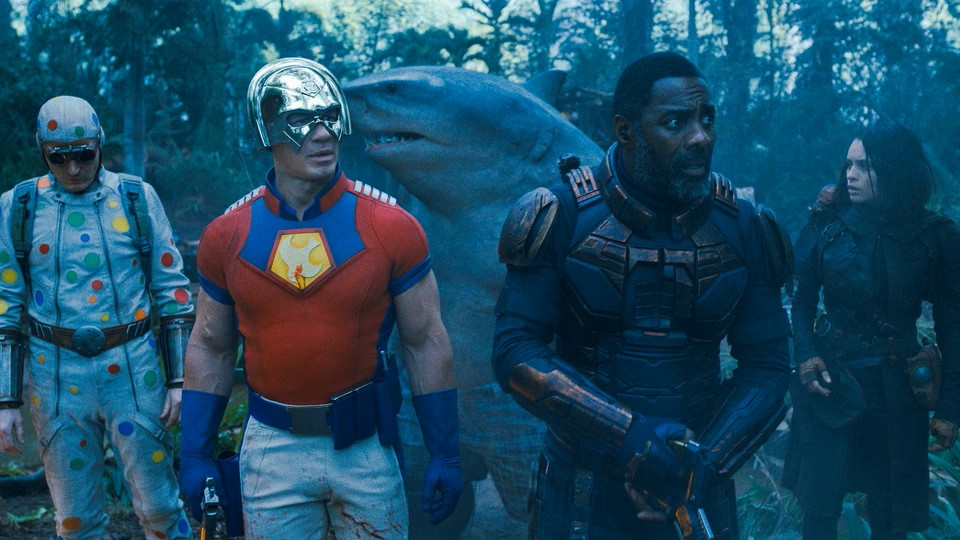
Side-by-side images from the Ayer (Left) and Gunn (right) Suicide Squad films. Notably, no characters are repeated in these two frames, though characters Harley Quinn and Rick Flag do have prominent roles in the Gunn film.
Trylon Cinema in Minneapolis, Minnesota, 2023:
Barry Kryska screened The Dirty Dozen for the first time as a part of the Ernest Borgnine series.
Enter me, Perisphere writer and longtime fan of the Suicide Squad comic series Finn Odum. Amidst my introduction to Lee Marvin (literally the hottest man I’ve ever seen), I was struck by how much Aldrich’s film had inspired the development of Task Force X. It wasn’t just the rather repetitive narrative parallels; in some places, it’s down to the scene structure.
It also struck me just how much the film had built me, a semi-cutthroat but still inspiring leader with a…wait a minute…penchant for questioning authority?
Friday, August 29th, 2025
Kidding, obviously. Despite my love of the comics, I did not model myself after Rick Flag, who was reimagined based on John Reisman, who himself was based on Jake McNiece. I am, however, fascinated by the intertwining lives of media that have had a profound impact on my life.
War films are not really my thing—but the moral conflict at the center of The Dirty Dozen is. What is the weight of someone’s death if they’ve done bad things? Does death redeem you for your crimes? The Dirty Dozen seems to believe so. Except for Archer Maggott, who is so comically evil compared to the other men (his tendency for racism was so bad that Jack Palance refused to play him), the Dozen are complex. Their crimes are minuscule when stacked against the Nazis. They’re redeemed by giving their life to a good cause.
Over the last few years of Perisphere writing, I have thought a lot about death and the notion of redemption. The Dirty Dozen seemed to say it was possible, as Reisman ends the film telling the Dozen’s families that they died in the line of duty. Duty, suggesting that they even bestowed honor upon Maggott.
The many, many iterations of Suicide Squad have differing conclusions about redemption. Ayer’s rendition of El Diablo was allowed redemption when dying an honorable death. Series regulars Deadshot and Harley Quinn are allowed nuance despite mass-murdering like, hundreds of people throughout their DC careers. But others either don’t want redemption (or don’t deserve it).
Peacemaker, who betrays the team when he murders Rick Flag, is killed almost immediately with a callback joke. The entire opening cast of C-listers (including Pete Davidson, Captain Boomerang, and beloved fan favorite The Detachable Kid) is murdered senselessly; we don’t know what they’ve done (outside of the Weasel killing 27 children), just that they’re the worst of the worst.
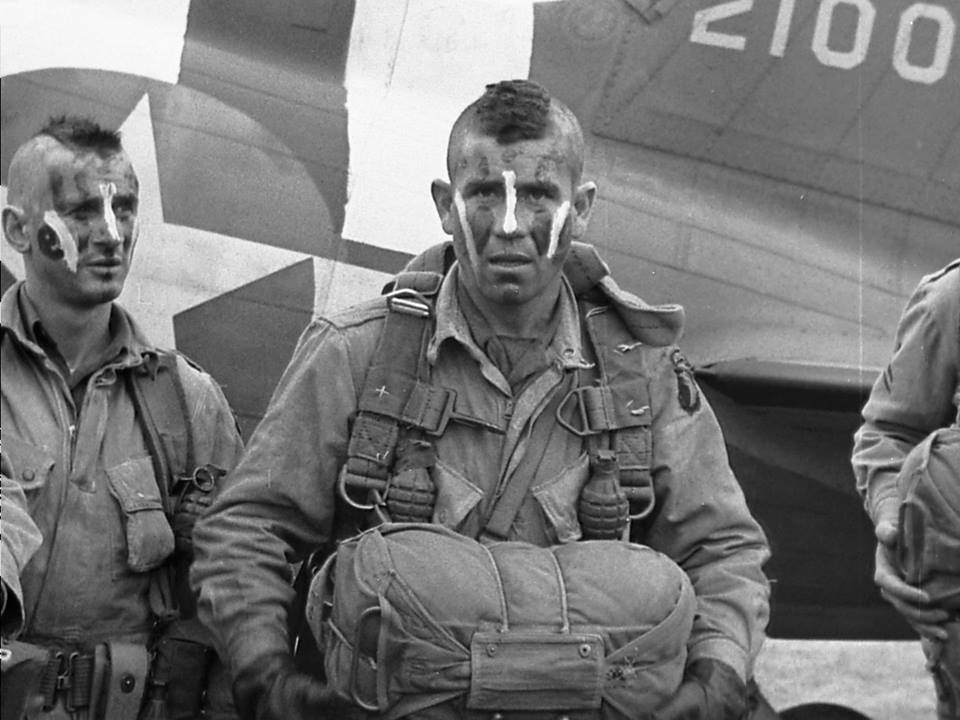
Pictured: Members of the original Filthy Thirteen. Image sourced from Armywarhog
Death is death, redemption or not. Frankly, I don’t know if I believe in it. Forgiveness, maybe. Does that mean I haven’t learned anything from these movies I claim to love?
Maybe I am the sum of both my experiences and the art I consumed. If I want, I could thank James Gunn, Robert Aldrich, or Roger Corman for their theatrical contributions to my personhood. Give credit to John Ostrander or Robert Kanigher and Ross Andru. Anthropology major and pulp fiction editor Erwin Nathanson, who’s responsible for the material behind The Dirty Dozen.
Maybe we’re all just part of the same creative timeline, spinning our own conclusions about redemption until we get it right.
Footnotes
1 Now streaming on Tubi #tubigangriseup
2 Two years earlier, MGM outbid Aldrich on the rights to the story while it was still being written.
3 So they don’t technically fight Ronald Reagan, but it’s his fault they’re there in the first place.
4 Margot Robbie’s Harley Quinn also lives. So does the Weasel.
5 This is where I tell you that Captain Boomerang is my favorite character from this lineup and I am so mad that James Gunn kills him.
Edited by Olga Tchepikova-Treon
